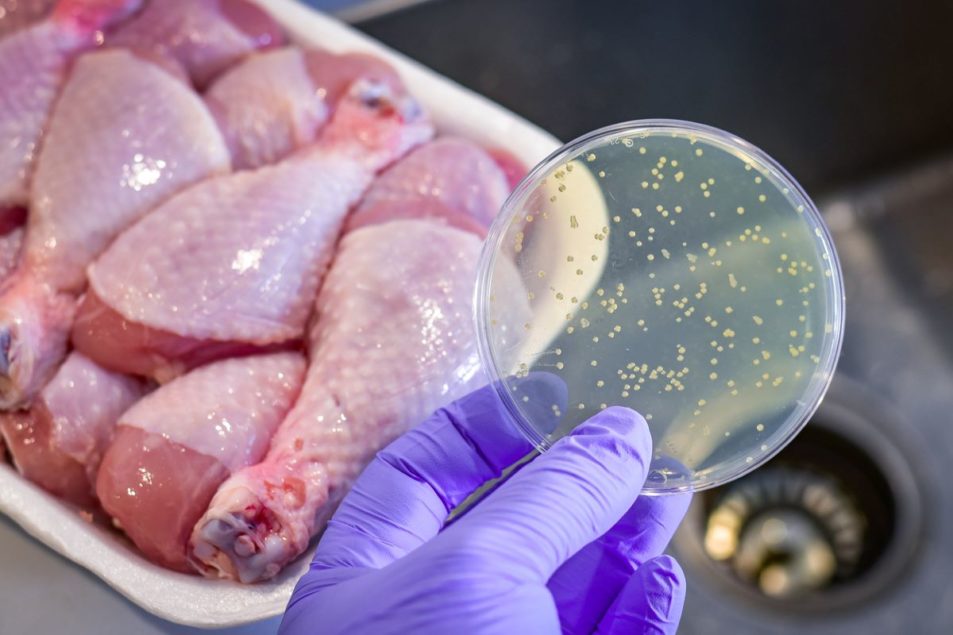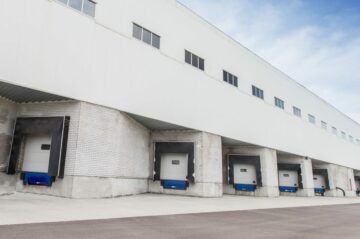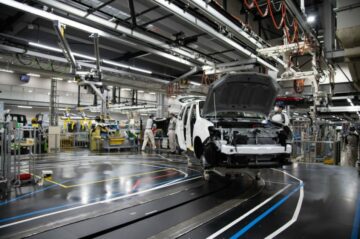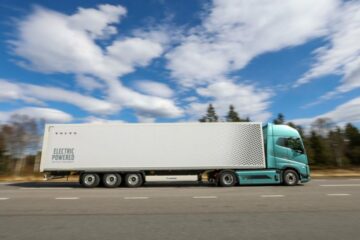
Track and trace exists at the joining point of the physical and virtual worlds. To succeed at scale, platforms must utilize emerging technologies and adopt automated solutions.
Supply chains are growing in size and complexity as goods move further from origin to consumer, and e-commerce becomes the go-to marketplace. Automation and cutting-edge technology contribute to the validity of modern tracing solutions, enabling inbound data to be trustable and usable, and facilitating compliance with upcoming FDA regulations.
The FDA’s FSMA 204 Food Traceability rule has a compliance date set for January 20, 2026. It aims to reduce the almost 48 million cases of foodborne illness each year, which result in 128,000 hospitalizations and 3,000 deaths. The urgency behind these requirements is real, and antiquated track and trace solutions will not cut it. Automated process equipment, modern data solutions, and advanced AI-driven analytics all must contribute to the track and trace platforms of tomorrow.
The upcoming FSMA 204 regulations require members of the food and beverage supply chain to keep track of key data elements at critical tracking events such as shipping, receiving, and product transformation. All of the required data must be provided to the FDA within 24 hours of a request. Is this possible without automating your operation and data flows from the manufacturing floor? No. And even if you attempt to fulfill these requirements without adopting technology, is the data valid and trusted?
To comply with FSMA 204, it’s crucial to unlock your data and invest in a modern track and trace solution that enables compliance but also results in efficiency and cost savings along the way.
Get Your Data Ready for Automation & AI
The critical data that flows into these systems comes from real processes and physical product movement. The technology on the manufacturing floor is critical to the accuracy and validity of the data that drives traceability related reactions. Robotic automation and integrated scanning technology should be utilized to ensure that product follows a repeatable and trackable flow, and that accurate data makes its way into storage. If this is accomplished, your track and trace solutions can leverage advances in predictive analytics and AI. By implementing advanced manufacturing technology in your warehouse, you can also enable AI-driven solutions to take hold.
Move Away from Legacy Options and Consider Blockchain
Perhaps a low-tech solution is good enough for your daily inventory reports. But it’s not good enough when an allergen contaminates a specific lot of product that has now gone out to facilities in four states. It’s not good enough when there’s a salmonella outbreak and people are getting sick and dying. And it’s not nearly good enough when our food supply is under constant threat from bad actors who would seek to harm the public. When these things happen, you not only need to have the data, but you need to be able to trust it.
Aside from physical process automation and software technology, blockchain is an emerging source of truth in track and trace and supply chain tech. Blockchain technology can be used to record events and logs of information, with the added benefit that this record is immutable. It cannot be altered, adjusted or deleted. Securing information on the blockchain adds an even further, almost infinite level of trust and validity. Companies who choose to invest in blockchain development for their track and trace solutions are a step ahead of the game.
When your data capture is automated and your storage is secured, you can start to layer on advanced analytics and AI to bring track and trace to a new level. The expected outcome of FSMA 204 is to close the loop on the information cycle, tracing products from origin to consumer, and being able to quickly paint a picture of the entire supply chain. This is crucial and will help drive fast reactions when something goes wrong. The next step is to predict where and when something will happen, and to prevent it from happening in the first place. The best track and trace solutions will utilize a full technology stack to gather as much physical data as possible in support of this aim. We have a massive opportunity to not only prepare for FSMA 204 regulations, but also to develop and drive advances in supply chain monitoring and tracing solutions using new technologies.
Don’t Wait to Make a Move
FSMA 204 is right around the corner. While two years may seem like ample time to prepare, the reality is that it takes careful planning and multiple steps to implement advanced track and trace technology, and to automate your operation. You don’t want to be rushed down the wrong path, so working with strategic partners is critical to success.
As the supply chain becomes more complex, advancements in track and trace tech enable you to conquer these challenges. However, you cannot go out and layer advanced data analytics, AI solutions, and blockchain security on a manual operation. The time to invest and start building out your technology portfolio is now. When you do this, the benefits will extend to your company and all other parties impacted by your position in the supply chain.
Josh Schwartz-Dodek is CTO of Sojo Industries.
- SEO Powered Content & PR Distribution. Get Amplified Today.
- PlatoData.Network Vertical Generative Ai. Empower Yourself. Access Here.
- PlatoAiStream. Web3 Intelligence. Knowledge Amplified. Access Here.
- PlatoESG. Carbon, CleanTech, Energy, Environment, Solar, Waste Management. Access Here.
- PlatoHealth. Biotech and Clinical Trials Intelligence. Access Here.
- Source: https://www.supplychainbrain.com/blogs/1-think-tank/post/39305-unlocking-track-and-trace-for-fsma-204-compliance
- :has
- :is
- :not
- :where
- 000
- 20
- 2026
- 204
- 24
- a
- Able
- accomplished
- accuracy
- accurate
- actors
- added
- Adds
- Adjusted
- adopt
- Adopting
- advanced
- advancements
- advances
- ahead
- AI
- aim
- aims
- All
- almost
- along
- also
- altered
- an
- analytics
- and
- ARE
- around
- AS
- At
- attempt
- automate
- Automated
- automating
- Automation
- away
- Bad
- BE
- becomes
- behind
- being
- benefit
- benefits
- BEST
- BEVERAGE
- blockchain
- Blockchain security
- blockchain technology
- blockchain-development
- bring
- Building
- but
- by
- CAN
- cannot
- capture
- careful
- CDC
- chain
- chains
- challenges
- Choose
- Close
- comes
- Companies
- company
- complex
- complexity
- compliance
- comply
- conquer
- Consider
- constant
- consumer
- contribute
- Corner
- Cost
- cost savings
- critical
- crucial
- CTO
- Cut
- cutting-edge
- cutting-edge technology
- cycle
- daily
- data
- Data Analytics
- Date
- deaths
- deleted
- develop
- Development
- do
- Dont
- down
- drive
- drives
- Dying
- e-commerce
- each
- efficiency
- elements
- emerging
- emerging technologies
- enable
- enables
- enabling
- enough
- ensure
- Entire
- equipment
- Ether (ETH)
- Even
- events
- exists
- expected
- extend
- facilitating
- facilities
- FAST
- fda
- First
- Floor
- flow
- Flows
- follows
- food
- food supply
- For
- four
- from
- fsma
- Fulfill
- full
- further
- game
- gather
- getting
- Go
- Goes
- gone
- good
- goods
- Growing
- happen
- Happening
- harm
- Have
- help
- hold
- HOURS
- However
- HTML
- HTTPS
- if
- illness
- immutable
- impacted
- implement
- implementing
- in
- information
- integrated
- into
- inventory
- Invest
- IT
- ITS
- January
- joining
- jpg
- Keep
- Key
- layer
- Legacy
- Level
- Leverage
- like
- Lot
- make
- MAKES
- manual
- manufacturing
- marketplace
- massive
- May..
- Members
- million
- Modern
- monitoring
- more
- move
- movement
- much
- multiple
- must
- nearly
- Need
- New
- New technologies
- next
- no
- now
- of
- on
- only
- operation
- Opportunity
- Options
- or
- Origin
- Other
- our
- out
- outbreak
- Outcome
- paint
- parties
- partners
- path
- People
- physical
- picture
- Place
- planning
- Platforms
- plato
- Plato Data Intelligence
- PlatoData
- Point
- portfolio
- position
- possible
- predict
- predictive
- Predictive Analytics
- Prepare
- prevent
- process
- Process Automation
- processes
- Product
- Products
- provided
- public
- quickly
- reactions
- ready
- real
- Reality
- receiving
- record
- reduce
- regulations
- related
- repeatable
- Reports
- request
- require
- required
- Requirements
- result
- Results
- right
- Robotic
- rushed
- s
- Savings
- Scale
- scanning
- Secured
- securing
- security
- Seek
- seem
- set
- Shipping
- should
- Size
- So
- Software
- solution
- Solutions
- something
- Source
- specific
- stack
- start
- States
- Step
- Steps
- storage
- Strategic
- strategic partners
- succeed
- success
- such
- supply
- supply chain
- support
- Systems
- Take
- takes
- tech
- Technologies
- Technology
- that
- The
- the information
- their
- There.
- These
- things
- this
- threat
- time
- to
- tomorrow
- trace
- Traceability
- Tracing
- track
- trackable
- Tracking
- Transformation
- Trust
- trusted
- truth
- two
- under
- unlock
- unlocking
- upcoming
- urgency
- usable
- used
- using
- utilize
- utilized
- valid
- validity
- Virtual
- virtual worlds
- wait
- want
- Warehouse
- Way..
- we
- when
- which
- while
- WHO
- will
- with
- within
- without
- working
- world’s
- would
- Wrong
- year
- years
- you
- Your
- zephyrnet












